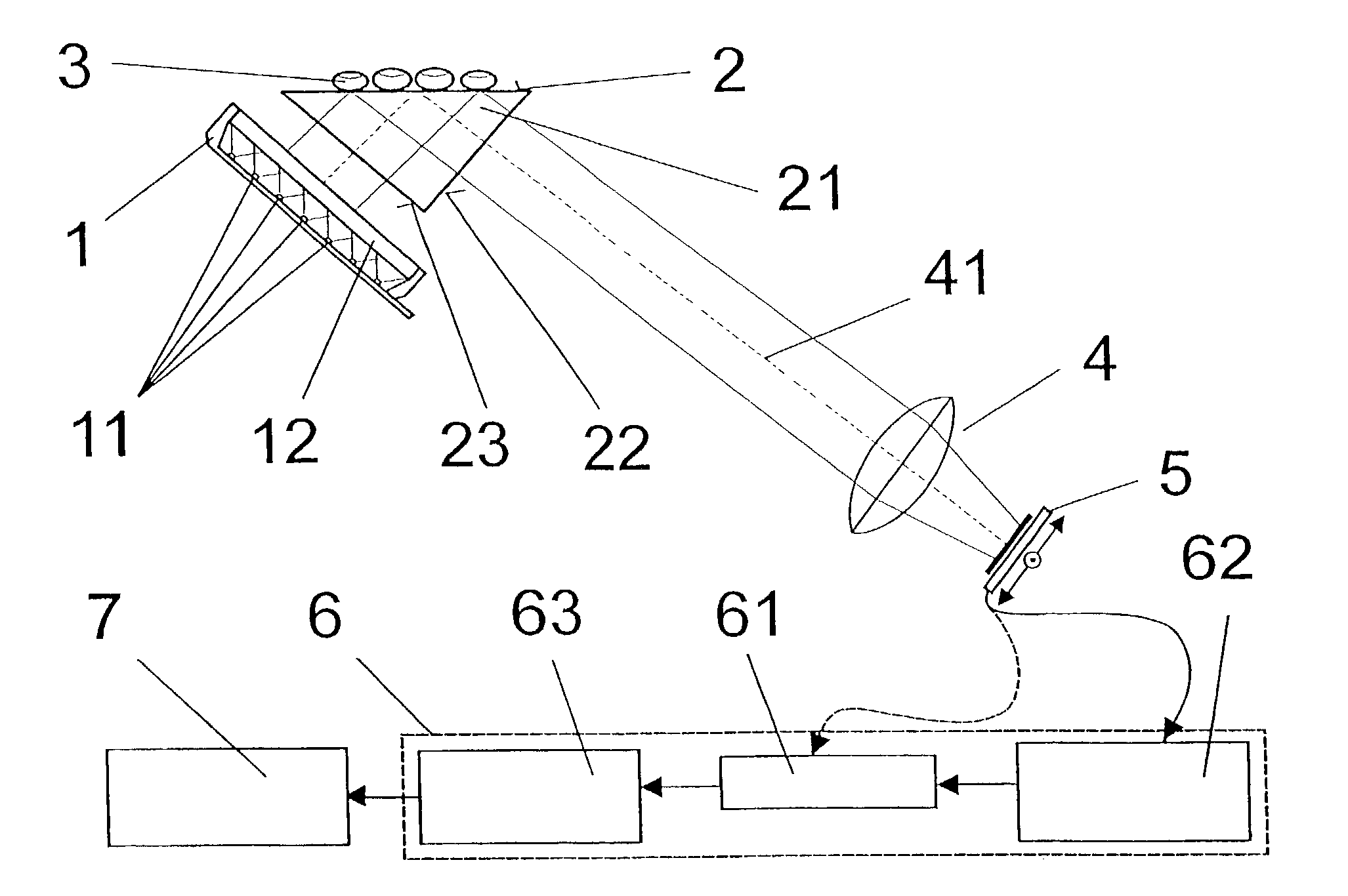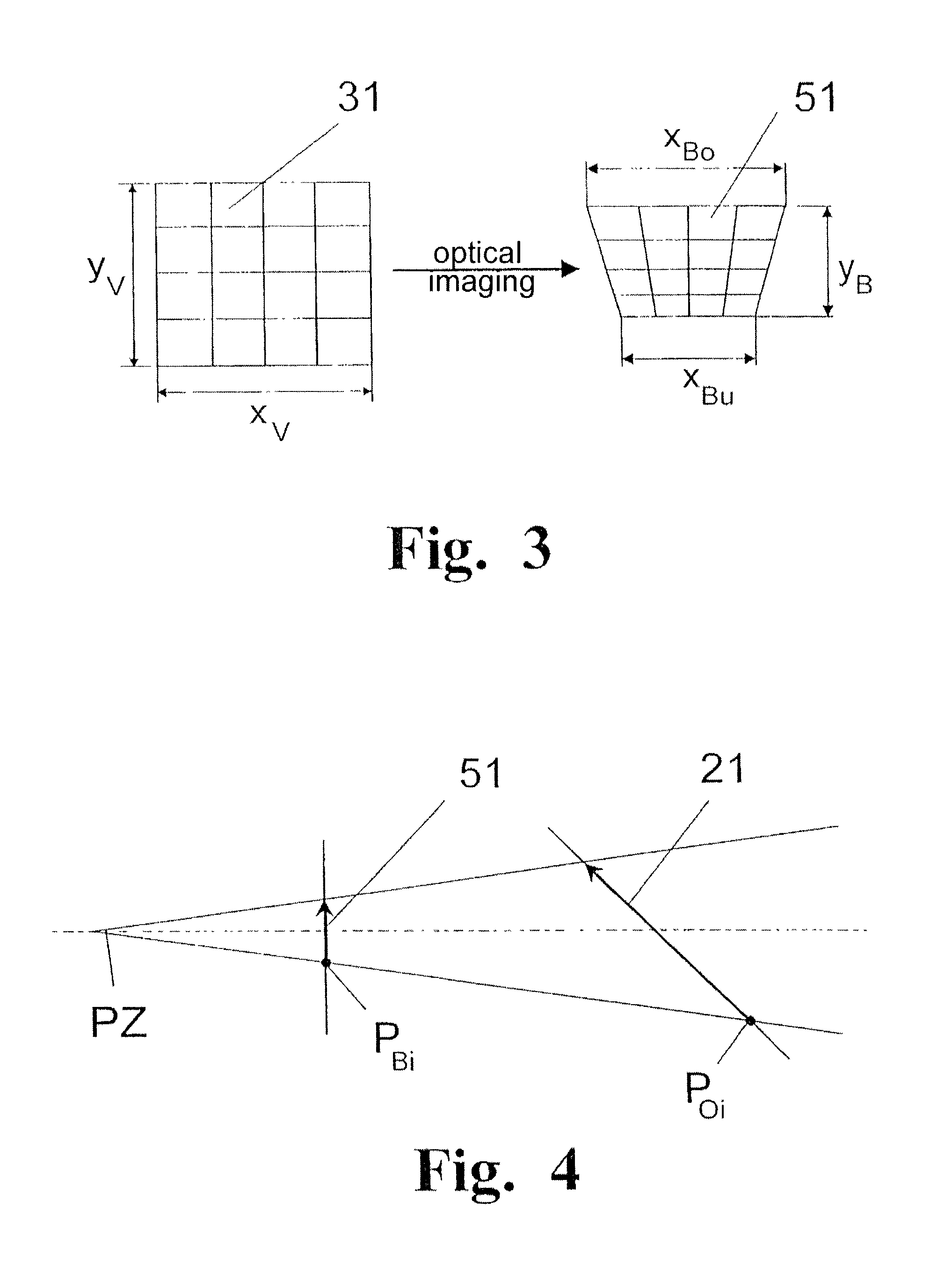Method and arrangement for low-distortion recording of intensity patterns occurring on a contact surface through frustrated total reflection
- Summary
- Abstract
- Description
- Claims
- Application Information
AI Technical Summary
Benefits of technology
Problems solved by technology
Method used
Image
Examples
Embodiment Construction
[0054]As is shown in FIG. 1, the basic construction of the arrangement according to the invention comprises a light source 1, a prism 2 with a support surface 21 with which a measurement object 3 (e.g., the fingers of a hand or other parts of human skin) is brought into contact, an optically imaging system, preferably a commonly available objective 4, and an image sensor 5. The objective 4 generates a sharp image of the support surface 21 on the image sensor 5 at an angle of the total reflection of the light coming from the light source 1. The image sensor 5 is followed by a rectification device 6 and an output unit 7.
[0055]FIG. 2 shows a more specialized construction than that shown in FIG. 1. The rectification device 6 contains at least one image storage 61, an electronic rectification unit 62 being arranged in front of the latter, and a mathematical rectification unit 63. The electronic rectification unit 62 is closely linked with a scanning and readout unit 52 (which possibly al...
PUM
 Login to View More
Login to View More Abstract
Description
Claims
Application Information
 Login to View More
Login to View More - R&D
- Intellectual Property
- Life Sciences
- Materials
- Tech Scout
- Unparalleled Data Quality
- Higher Quality Content
- 60% Fewer Hallucinations
Browse by: Latest US Patents, China's latest patents, Technical Efficacy Thesaurus, Application Domain, Technology Topic, Popular Technical Reports.
© 2025 PatSnap. All rights reserved.Legal|Privacy policy|Modern Slavery Act Transparency Statement|Sitemap|About US| Contact US: help@patsnap.com



